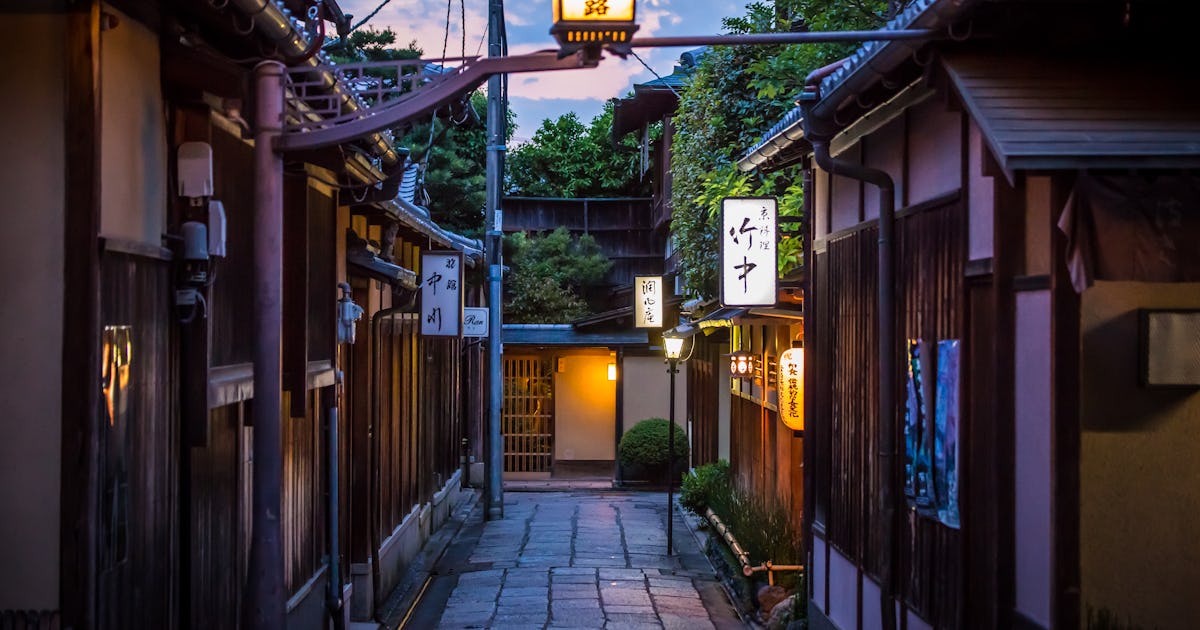Nanaimo couple travels through 17 countries in 17 months in 48-year-old mini RV

Stacey Tourout and Matthew Yeomans share experiences on YouTube from travelling less-beaten paths
What started as a dream to drive to Argentina to witness a solar eclipse brought a Nanaimo couple to navigate 17 countries in 17 months in a 48-year-old mini RV and create a YouTube channel chronicling their adventures.
Matthew Yeomans and Stacey Tourout, both 31, had just started dating in 2019 when Yeomans told her he planned to drive to Argentina.
“That was the second-date ultimatum,” Tourout said. “He was, like, ‘You either come or you don’t.’ I was stoked on the idea. I honestly didn’t know you could drive there.”
“It was something I wanted to do, but the how just wasn’t there,” Yeomans said. “Then in 2017 I went to Oregon and watched a solar eclipse and I thought it was the coolest thing and I wanted to go to the next one, which happened to be in Argentina in 2020.”
The COVID-19 pandemic halted that plan, but proved a blessing in disguise by giving the couple time “to think about what they really wanted the trip to be and what it could be with the right vehicle.”
Yeomans and his friend Jason Lapointe, who owns WestCan Overland in south Nanaimo, are big fans of Toyota four-wheel-drives, but the vehicle needed for the journey was a heavy duty four-wheel-drive compact RV, which didn’t exist. Then in 2021, Yeomans found a 1976 Toyota Chinook mini RV in Comox he hoped could be converted to four-wheel-drive.
“I brought it to Jason and was like, ‘Can we do this? Does this actually work?’ Because in my head it works, but I haven’t actually built anything like this,” Yeomans said.
In just 100 days, Yeomans, Tourout and Lapointe created an off-road mini RV they named Sunday, by marrying the body of the little truck to a 1996 Toyota Land Cruiser frame and suspension, a V-6 engine and manual transmission from a Tacoma.
“I was really interested in it because I love that kind of stuff,” Lapointe said. “Because all the Land Cruiser stuff’s all underneath there, we wanted to keep it so it was technically stock. If you broke down you could still get a bearing or a brake line.”
The logic proved solid when the vehicle overheated at the U.S.-Mexican border.
“We thought it had blown a head gasket … and it turned out just to be the radiator fan clutch,” Yeomans said, adding that the replacement part cost $100 at a local automotive parts retailer.
Throughout the next 17 months and 50,000 kilometres of the trip, only two components failed: a spark plug wire and an aftermarket inline fuel pump Yeomans chose over the stock in-tank unit. Because the Chinook had a 160-litre fuel tank, if the stock pump failed, the full fuel tank would be too heavy for him to remove from the vehicle to change it. An inline fuel pump is easier to swap out.
“Well, sure enough, it was and I had to do it five times because they kept overheating,” Yeomans said. “The irony of that was so stupid.”
One pump failed during a six-day, completely off-road and off-grid expedition in the Andean plateau.
“It’s about 4,000 metres [altitude] and you need about 600km of fuel range because there’s no fuel stops,” he said. “You’re totally by yourself, except for one little town in the middle where you can have a shower …. The truck turned off. We’re in the middle of a dry salt bed … You couldn’t be more in the middle of nowhere … That was the only system on the truck that was not Toyota.”
After leaving Nanaimo, the first stop was to a supplier in Denver for equipment upgrades before turning south to the Baja California peninsula to spend two months navigating trails that taught them “about the potential of our vehicle” and led them to “postcard” beaches.
“After Baja we took the ferry across to mainland Mexico, drove all the way across Mexico,” Yeomans said. “People told us we were going to die and we had the most amazing time. We spent six months in Mexico. It’s awesome.”
From Mexico, they drove through seven countries in Central America and shipped the Chinook around the Darién Gap, where dense jungle and terrain ranging from mountains to marshes creates a break in the Pan-American Highway between Yaviza, Panama, and Turbo, Colombia.
Among the journey’s memorable experiences was one frightening moment.
“I don’t want to put a bad light on Colombia, it’s an amazing country, and the reason we had a scary experience is because we made mistakes … blatantly disregarding advice we got from the hostel where we were staying when we were waiting for our truck to get shipped,” Yeomans said.
Yeomans and Tourout were told not to walk at night where they were staying, but decided to walk to their hostel after a night out with friends and metres from the hostel doorstep, two teenagers pulled up on a motorcycle and one jumped off brandishing a knife.
“He didn’t even really get a chance to ask for anything because … I literally started yelling some expletives at him and then Stacey ran up the street,” Yeomans said. “He chased Stacey. I chased him. We did a little roundabout and then he took off. The whole encounter was probably about 30 seconds from the time he jumped off the bike until he jumped back on, but it was super scary, a guy holding a knife above his head.”
Yeomans and Tourout learned to listen to and follow their intuition.
“If I felt unsafe, we leave. If he felt unsafe, we leave, and you just always listen to that and I think that’s honestly why we had so much success,” Tourout said. “For a trip, like 17 months, and to only have one bad thing happen to us? … We speak volumes to how kind everyone was to us.”
At one point on the journey, the Chinook navigated the Paraguay River on a cattle barge.
“We met this German couple in Peru who spoke Portuguese and also knew about this cattle barge, so one thing led to another,” Yeomans said. “We were like, OK, we can go to Machu Picchu in Peru, which every tourist does, or we could drive across the Amazon Basin and get to the Pantanal region of Brazil, which is a big wetland. [We] drove the Transpantaneira, which is a 150km dirt road with 130 wooden bridges and the most amazing wildlife … and after that road – it just ends – we drove our trucks onto a cattle barge and then spent four days going [downriver].”
“There’s just moments where you have to pinch yourself,” Tourout said. “What am I doing?”
Of the 17 countries travelled, Mexico holds Yeomans’s favourite memories.
“One of my all-time favourite camps of the trip was in the state of San Luis Potosí,” he said. “Not a lot of tourists go there.”
Their campsite – $6 a night, expensive for the area – was on grass, private with a turquoise lagoon, waterfalls and a giant mango tree with fruit.
“There’s, like, vines hanging from the trees that you can swing off. It was like Avatar. We planned to stay a night and we stayed a week,” Yeomans said.
But Cinco de Mayo ended the tranquility.
“This one afternoon dozens of tour buses start showing up and we’re, like, ‘what the heck is going on?’ And hundreds of Mexicans start piling into this campground, setting up barbecues and tents and they’re under our awning, hanging up clothes on our truck – no barriers,” he said.
Yeomans found the intrusion frustrating at first, but decided to “let the walls down” and try to make new friends, speaking broken Spanish.
“All of a sudden we’re having a full-blown fiesta,” he said. “They’re making us drinks and cooking us food and teaching us their Mexican dances. It turned into just such a wholesome experience that we just didn’t expect at all.”
Peru was Tourout’s favourite country. The couple didn’t see Machu Picchu and avoided “tourist traps,” choosing instead the sort of authentic “in-between experiences” that a lot of people don’t know about.
“The contrast from the desert to the ocean to the mountains … even the people change,” Tourout said. “As you gain elevation, all of a sudden you see women in their traditional dress, with 100 sheep, waving … Two hours later you’re at the ocean and we’re driving on sand dunes … To me it felt the most like we were travelling.”
They describe living together in a 48-square foot camper for 17 months as “intimate,” but they’re accustomed to close quarters, as they lived in a bachelor pad before their travels, and now live in a trailer.
“We’ve never actually had separate rooms the entire time we’ve been dating. We went from a bachelor pad, to the Chinook, to a trailer,” Tourout said.
The daily tasks of filming for their YouTube channel, Toyota World Runners, filled any down time. They had enough money to get to Mexico, but their YouTube channel would get them to Argentina.
“The trip, in itself, was amazing, but I think because we were filming there were so many different things that had to be integrated together, so we never got bored,” Tourout said. “That was Toyota World Runners’ purpose. We need this to work so we’re going to put all our energy into making the best films we can and then we found a lot of joy in making them better and we turned it into a career just from a trip.”
There was a point where they thought they might have to store the truck and fly home to work and earn more money before continuing.
“When we shipped the Chinook from Panama to Colombia, it cost us about five grand and that was most of our savings…” Yeomans said. “So we made one really long video of all of our Mexico stuff and then that one video paid us a few grand and then we’re like, ‘we’re back.'”
Their next journey is coming up this June, when they leave for Alaska to complete their pan-American tour, and after that they want to drive the Silk Road from Europe to Asia.
Wherever they go, they plan on staying in close proximity to one another.
“I proposed to her on the road…” Yeomans said. “I filmed it and posted it.”
link






